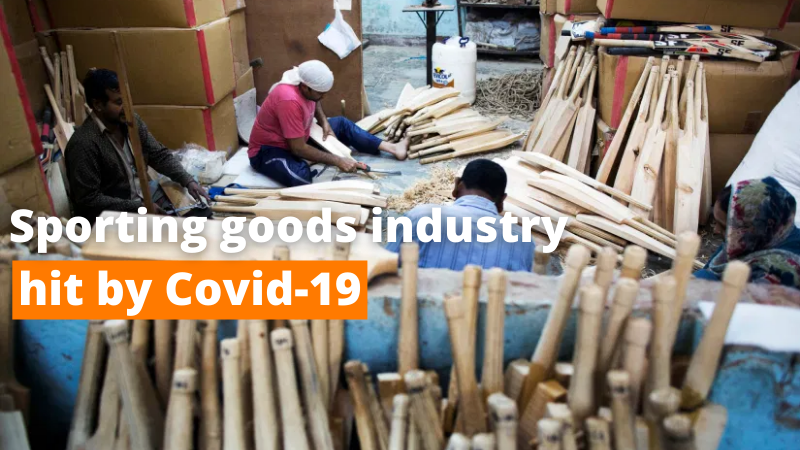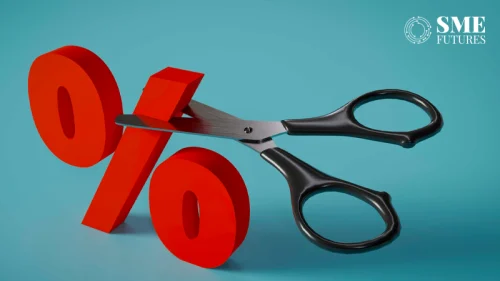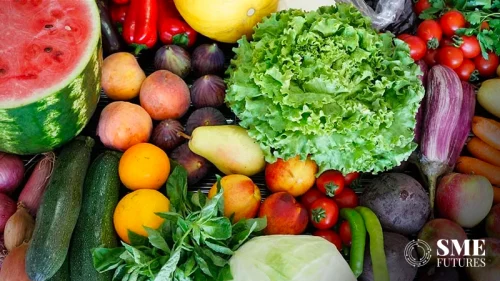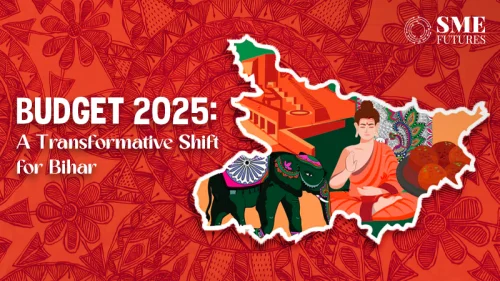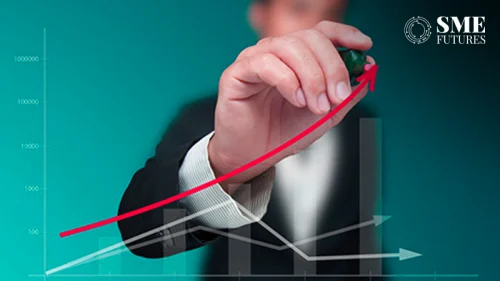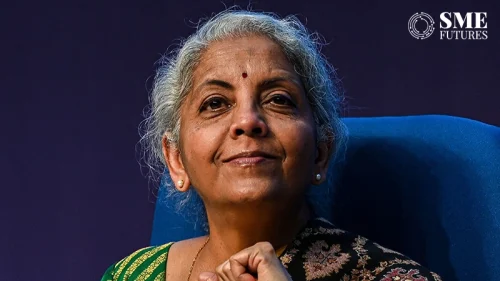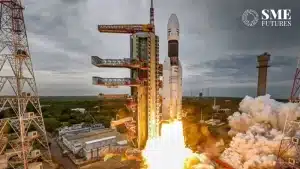Arpit Jindal, a manufacturer of sports mementos, trophies and indoor games, struggles now to keep his business afloat. His business operation for Jindal International in Ajmer has already decreased by more than 50 per cent and his manufacturing unit is on the verge of shut down. He confesses, “I have lost half of my business already. The manufacturing has not started yet, as my entire labour workforce which was migrants has left. Also, there are no pre-orders for trophies, mementos, awards and medals.”
A century old sports goods industry is doomed with COVID-19 lockdown resulting in a complete halt of trading activities. Growing at a steady pace of 9 per cent, the Indian sports and fitness goods market was expected to reach US$ 6,054 million by 2024. It is now going through a harrowing time as the current situation has forced sport goods manufacturers based in Jalandhar and Meerut cluster to defer orders.
Domestic purchase of sports goods and equipment has also hit all time low as sports complexes, state sports activities, and school-colleges are shut. Jindal speaking to SME Futures said that he is not expecting the re-opening of his manufacturing unit any time soon, “There are so many issues such as revenue loss, less capital and no pre-orders. The biggest challenge is of skilled workforce. Even if I call them back to work, they will automatically enter into a 14 day quarantine period, which is not going to help my business in any way.”
Withstanding effects of lockdown enforced to contain the spread of novel coronavirus, the manufacturers of sports items akin to Jindal are apprehensive about their future. They are in jeopardy even when manufacturing units are slowly re-opening and people are going back to work. Alarmed over the situation, industrialists in the sector while reckoning the government measures opine that losses are imminent and the industry is in deep waters.
Mukesh Bassan, owner of 63 year old Belco Sports, leading manufacturer for various international brands informs us that he has witnessed an all time low in demand and supply during his entire career. He professes, “I can’t tell you in figures that how much we have lost due to pandemic but obviously we are facing worst time. Adding to it, expenses such as employee salaries, taxes, electricity bills and other payments have dawned on us with no business coming in.”
Talking about the current industrial scenario, Ajaya Mahajan, owner at Goodwin Sports and Chairman of Sports Goods Manufacturers & Exporters Association (SGMEA) says, “Overall sports goods industry in India is suffering badly.”
Further adding he claims, “The market is absolutely dead. There are zero activities in sports tournaments or matches. In addition to this, training academies, schools and universities are closed. If we talk about the market, most of the shops are still shut. Even if stakeholders open up there are no buyers due to the fear of virus. Overall, business scenario is extremely discouraging.”
He claims that during this pandemic his company has incurred a loss up to 50 per cent. The lockdown had put a lot of strain on the manufacturing industry contributing to almost 27 per cent of the GDP. Apart from the organised sector, the situation is worse in unorganised arena as the uncertainty prevails with SMEs and MSMEs with lesser retention due to their almost zero profitability.
The reasons causing fallouts are mainly from logistics, production, finance and human resources. The raw material did not reach its destination, the production lines idled around for raw material, the labour force was not present to process material into finished products, and restricted financial transactions did not permit a smooth cash flow resulting in an irresolvable halt. Due to this, the situation has become a vicious circle causing helplessness and thereby hurting sustainability and profitability.
Sporting activities in India have not yet attained a professional status. The general public rarely participates in these events and the target audience (almost 50 per cent of the total population lies in the age group between 10 years to 45 years). These are aided by some means of financial support for purchase of sports goods or the other.
Furthermore, pandemic also had a detrimental impact on operations and other functions of sports industry. Karan Bhalla, Co-founder of Sports Maidan, a sports and adventure complex in Gurgaon has also faced dire times due to the lockdown. The emptiness of such sports clubs has further led to decrease in purchase of sports goods.
Talking about the current situation, he confesses, “With institutions closed and corporate budgets frozen owing to work from home culture, the off-take of sporting goods and equipments have witnessed a major drop. Initially, during unlock times sale of fitness equipments for home use soared. Thereafter, sales of cycles also saw a steep rise.”
Sports Maidan has reopened after complying with social distancing norms to control the spread of the COVID-19 pandemic. It has now turned into a Members Only Club which is anticipating members to resume sports activities on chosen basis.
Manufacturers are also apprehensive about the announcement of IPL season in Dubai and it didn’t excite them much. Goodwin’s Mahajan says, “It is in Dubai. I don’t think it will be of much help to increase the demand.” While Bassan is of opinion that if the event was held in India it could have made some difference.

Downfall of Exports and Imports
India’s sporting goods are popular around the world and have made a mark in global sports goods market. Top ten destinations for export of sports goods in FY19 were US, UAE, UK, Australia, Germany, Netherlands, France, South Africa, Sweden, and Canada.
Major exported items exported by these countries were inflatable balls and accessories, nets, general exercise equipments, boxing equipments, toys and games, protective equipment, cricket equipment, sportswear, carom boards and hammock.
The domestic industry export nearly accounts for 60 per cent of its total output. As per the government records, total toys, games, and sports requisites export stood at US$ 417.43 million in FY19 and reached US$ 356.05 million in FY20 till January 2020.
However, sealed national and international border in the wake of pandemic have further stalled the net exports worth. Adding to it, stakeholders are either cancelling orders or have put on hold the manufacturing with indefinite postponement of all the major sports leagues and tournaments. For instance, shipments of Jalandhar based company, Sarve Prakash & Company known for Rugby exports were stuck at Bombay port and Delhi when the lockdown was announced.
Atul Madan, owner of the century-old company tells, “Our export material including footballs, bats, sports accessories for New Zealand and South Africa were lying stuck at Delhi and Bombay Ports. Similarly, not just international sports events like soccer leagues, IPL, other tournaments but those in educational institutions across the country were also staring at an uncertain future as of now.”
Describing similar situation with Belco Sports, Bassan says, “Primarily, our international clients didn’t received consignments we shipped just before the lockdown. Secondly, there was a delay in payments because we couldn’t sell some of the goods.” He further tells us that in terms of international market Belco Sports sends material to more than 25 countries which includes Europe, the UK, South Africa and Eastern European countries. Currently, most of the shipments are on halt as international borders are sealed.

Association Chairman Mahajan sheds more light on this predicament. According to him, India does not have capability to manufacture the raw material used for sports goods alone. He opines, “Material such as Polyurethane polyester based material is used in cricket equipments, gloves, football etc. We import these specific materials mainly from China and there is no replacement in India for this.”
Mahajan further says till now we do not have manufacturers foraying into the segment. In light of Vocal for Local and Make-in-India campaign, the apex body for industry has already presented a demand draft to work upon this challenge. He says, “We have already made authorities aware about the particular demand for manufacturing of raw material. On the other hand, some manufacturers are working on the same but their material is way more costlier than China and their quality is also not at par.”
Indian sports goods rely on raw materials imported from other regions. Majorly industry depends on China for PVC and PU material for the manufacturing of footballs, leg guards, and gloves. Other material such as cotton polyester linings, stitching thread, tetron cloth and feather for shuttle cocks also comes from China.
Workforce and Other Expenses Harming Businesses More
Other than the decline in demand, stakeholders involved in sports goods are also worried about increased expenses and challenges related to managing labour workforce. Funds and cash-flow already plummeted during the initial phase of lockdown as some operators attempted for longer credit periods or deferred payment schedules.
In order to maintain a balanced scale of operations with lesser manpower and halted logistic alternatives, the transportation cost of finished goods mounted steeply resulting in lower off-take for non-essential products. Rajesh Kharbanda, the Managing Director of Nivia Sports under the banner of Freewill Sports, tells that manufacturers were also concerned about the welfare of labourers because they had to pay them 10-days salaries in advance.
Bassan adds that most manufacturers are facing shortage of labour workforce. He tells, “Existing labourers have started asking increase in their wages as they have to be very cautious during work. Masks, sanitizers and other safety measures are adding on extra expense. Expenses have gone up and shortage of labour was there. Labour workforce whatever is left is demanding more salaries.”
Rise of Online Retail
Growing health awareness and stress management lead to a gradual growth of sports and fitness industry as people increasingly started opting for sports and recreational activities. Government initiatives such as Khelo India and Fit India Movement furthered this cause. But, outbreak of COVID-19 halted the progress of sporting activities in various ways.
During this period, people restricted in homes diverted themselves towards online shopping. With the growing trend of athleisure, consumers are progressively spending on sportswear with a large share of the expense constituting of athleisure clothing and accessories.
Due to the change in the consumer behaviour, the online demand for activewear and fitness gear products like dumbells kits, push up bars, belts and yoga mats has surged in India. For instance, media reports state that Decathlon e-commerce market share increased from mere 5 per cent to 22-25 per cent. While sports goods retailers’ presence has also increased on e-commerce platforms such as Amazon and Flipkart. Amazon India is seeing five times sales for accessories category in sportswear.
Another brand NorthAlp, an online shopping portal that exclusively focuses on sports activewear and fitness gear segments has seen a 300 per cent increase in sales. The Sweden based company revealed that current demands are mainly fitness wear, shoes, and other fitness products in the country.
The company revealed that 40 per cent of the sales were for activewear, 30 per cent for a yoga mat, and 13 per cent for footwear and rest for fitness accessories during the lockdown. The growing popularity of virtual fitness workouts with professional instructors and coaches are another reason behind the increase in online sales of fitness products and brands such as apparel and shoes.
An online portal for women active wear Brakefree is also seeing a surge in demand. According to the Founder Sumedha Mahajan, traffic on the portal has increased considerably. People are asking for sleeveless tops, capris and tights. Apart from that, manufacturers are also noticing a hike in sales of indoor games such as carom boards, chess etc.
According to Statista, 28 per cent of people in the survey were involved in activities such as playing board games during lockdown months. However, these people also believed that it is a short term demand increase. Bassan says, “This demand is short lived and the demand for indoor games will decline once people will get back to pre-covid routine.”
Measures to Revitalise Markets
Industrialisation of sports in India would offer opportunities to create a revenue generating mechanism for both manufacturers and sellers. This will also allow the industry to contribute towards economic growth. In order to keep the sports goods manufacturing healthy, it is important that consumption increases.
States and UTs must recognize and encourage sports goods manufacturing as an industry to propel sporting culture akin to Mizoram that has included sports in their industrial policy to provide a push to sports manufacturing industry. It will also facilitate sports related benefits such as availing subsidy, loans etc for stakeholders easier. Investments by corporates and monetary contributions by PSUs towards sports is primarily for sponsorship through the mandate of Corporate Social Responsibility where contribution is restricted merely to 2 per cent from all CSR funds.
Karan Bhalla of Sports Maidan suggests, “In order to develop athletes performing on international competitions clubbed with objectives of Khelo India and Fit India movements, it is essential that such contribution percentage is increased. These funds should be ploughed into sporting activities and all concerned are made answerable for results in producing top class sportspersons with immense bench strength.”
He further said that there is a need to recognise that sport is not just a group of people competing with a set of laid rules but also is an essential activity for the development of socio-economic situations. A right blend of quality equipment and clothing enhances the performance of individuals or teams. With patterns and technology changing post COVID-19, there is an obvious shift in temperament and trends among the sports playing groups between the age group of 10 years to 45 years.
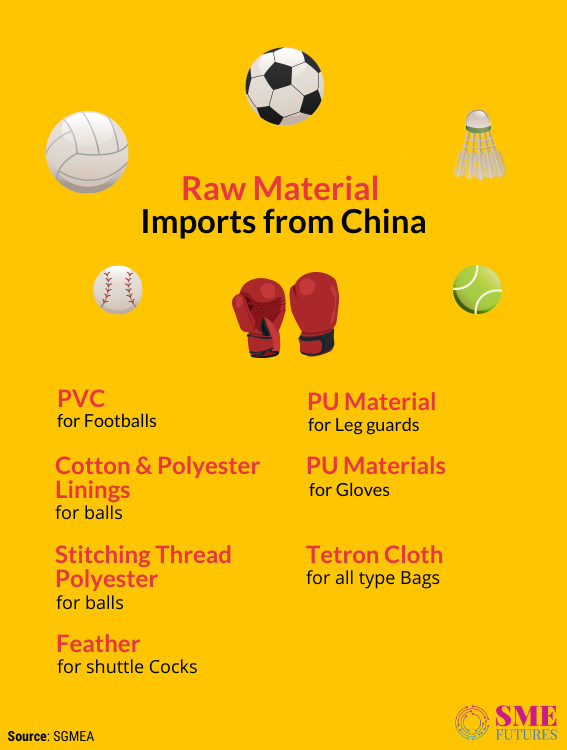
Besides that, innovative sporting products are the need of hour. Only then, manufacturers can stay in the competitive market, attract new consumers, and cater to the requirements of the existing consumers. Demand for improvised sports equipments and apparels would thereafter drive the growth of this industry. Moreover, a rise in popularity of sports and fitness activities among the youth will also propel its growth.
Overall, the pandemic has a big impact on sports industry disturbing equilibrium between manufacturers, market, and further viability to a great extent. Therefore, it becomes important that a policy is made and an integrated approach is enforced with responsibilities resting on all concerned to sustain the industry from negative contribution if not being progressive initially. The involvement of sportspersons, high performance coaches or trainers, quality manufacturers of equipments or playing gears, the ground or facility management, and the government representatives all should be brought under one banner for growth and results

